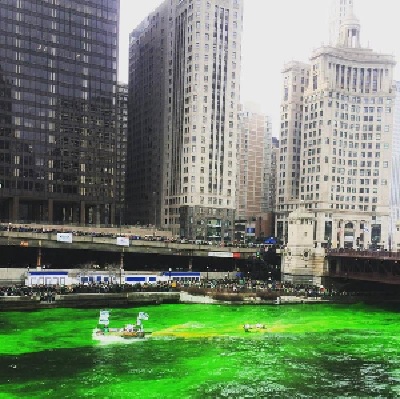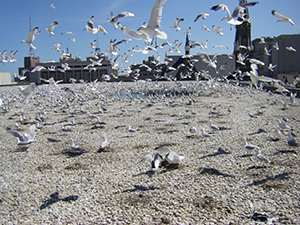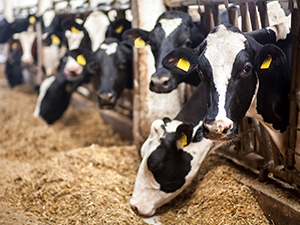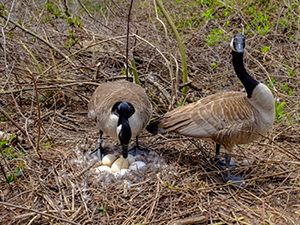St. Paddy’s Day Mischief Just Getting Started for Property Managers
Mar 4, 2016St. Patrick’s Day: A day in which Chicagoans proudly celebrate the city’s Irish heritage by organizing parades, dyeing the Chicago River green, and begin preparing for another nesting season. That’s right! Soon after the messes from St. Paddy’s Day celebrations are cleaned up the messes from Canada Geese are just getting started, creating mischief for property managers.

Beginning in mid-March and ending in late May, pairs of male and female adult Canada Geese (“Geese”) begin to nest with the intention of reproducing and raising goslings. Geese typically nest within range of nearby water as this generally provides protection from predators, however that is not always the case in urban settings. Although nests are generally found on the ground it is not uncommon to find them on rooftops, flower pots, islands (either real or in parking lots), as well as areas which generally have a good vantage point while providing cover.
A typical nest is made into a 10-inch diameter bowl using surrounding vegetation and then lined with down plucked from the female’s breast after the eggs are laid. Many nest bowls will have no down until the female is ready to incubate as they do not want to trap any heat before they are done laying. This is so that all of the eggs hatch at the same time. An adult female Goose typically lays one egg per day and each nest will average five eggs or more.
Once all eggs are laid, the incubation period begins. Incubation lasts from 26 to 28 days, with all goslings hatching around the same time. During the entire nesting process, the male and female pair vigorously defend the nest territory. If the nest is destroyed early in the process, the female will generally re-nest in a nearby location.
As Geese are social animals which generally travel in flocks, nesting Geese can cause landscape damage during the nesting period and after Goslings hatch. As Goslings are incapable of flight for 70 days after they hatch, damage to landscaping can be significant. Furthermore, as the average Goose defecates 1.5 pounds per day, large amounts of excrement can accumulate quickly bringing large amounts of bacteria that can render areas unsuitable for human use.
In addition, Goose pairs will often return to the same location year after year to nest, along with their offspring that will begin reproduction of their own. This type of annual behavior can cause your property’s Geese populations to grow exponentially. Ultimately, Canada Geese issues are not going to go away on their own. If populations remain unmanaged, a property manager may be exposing their properties, tenants and customers to unnecessary property damage and health and human safety risks.
Do you have nesting Geese? Recommendations:
DO NOT attempt to removal nests or harass Canada Geese on your own.DO call a wildlife management company to conduct an assessment as both state permits as well as certified practitioners are required to legally apply control techniques.DO educate your employees on nesting Geese behavior to ensure their health and safety, especially when adjacent to nesting Geese territory.


 0
0
